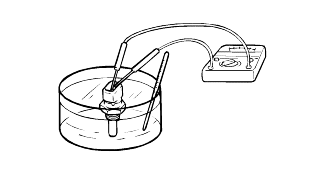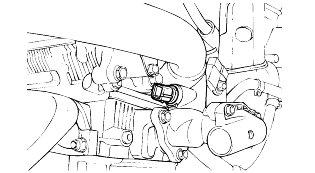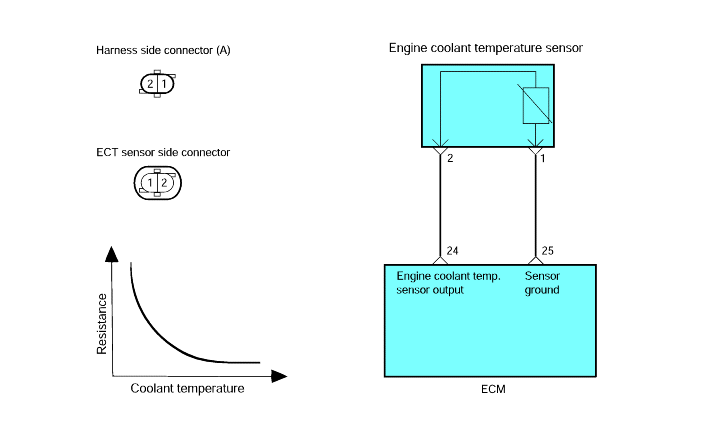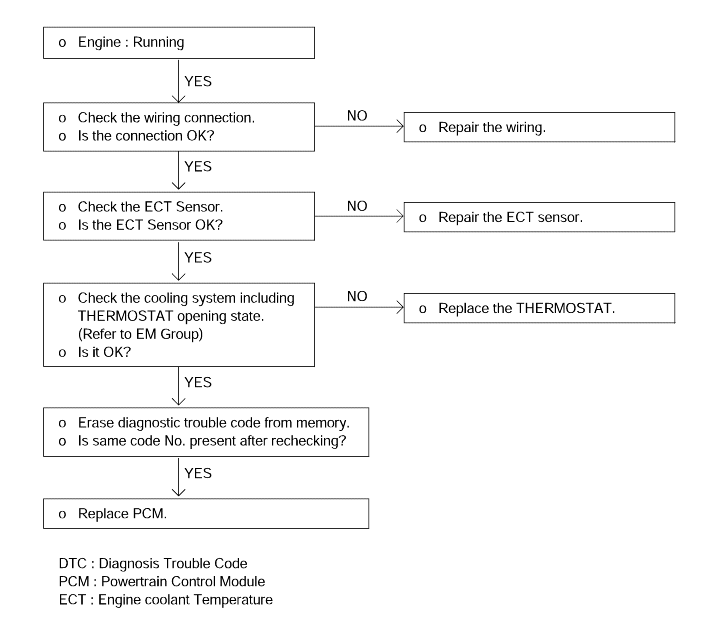With temperature sensing portion of engine coolant temperature sensor immersed in hot engine coolant, check resistance.
Temperature [°C (°F)] | Resistance (kΩ) |
0 (32) | 5.9 |
20 (68) | 2.5 |
40 (104) | 1.1 |
80 (176) | 0.3 |

The engine coolant temperature sensor installed in the engine coolant passage of the cylinder head detects the engine coolant temperature and emits signals to the ECM. This part employs a thermistor which is sensitive to changes in temperature. The electric resistance of the thermistor decreases in response to a temperature rise. The ECM determines engine coolant temperature by the sensor output voltage and provides optimum fuel enrichment when the engineis cold.


Check item | Data display | Check conditions | Intake air temperature | Test specification |
Engine coolant temperature sensor | Sensor temperature | Ignition switch : ON or engine running | When -20°C (-4°F) | -20°C |
When 0°C (32°F) | 0°C | |||
When 20°C (68°F) | 20°C | |||
When 40°C (104°F) | 40°C | |||
When 80°C (176°F) | 80°C |
Remove engine coolant temperature sensor from the engine coolant passage of cylinder head.
With temperature sensing portion of engine coolant temperature sensor immersed in hot engine coolant, check resistance.
Temperature [°C (°F)] | Resistance (kΩ) |
0 (32) | 5.9 |
20 (68) | 2.5 |
40 (104) | 1.1 |
80 (176) | 0.3 |

If the resistance deviates from the standard value greatly, replace the sensor.



Check item | Coolant temperature | Test specification |
Engine coolant temperature sensor output voltage | When 0°C | 4.05V |
When 20°C | 3.44V | |
When 40°C | 2.72V | |
When 80°C | 1.25V |
Apply sealant LOCTITE 962T or equivalent to threaded portion.
Install engine coolant temperature sensor and tighten it to specified torque.
Tightening torque Engine coolant temperature sensor : |
20~40 Nm (200~400 kg·cm, 14~29 lb·ft) |
Securely connect the harness connector.